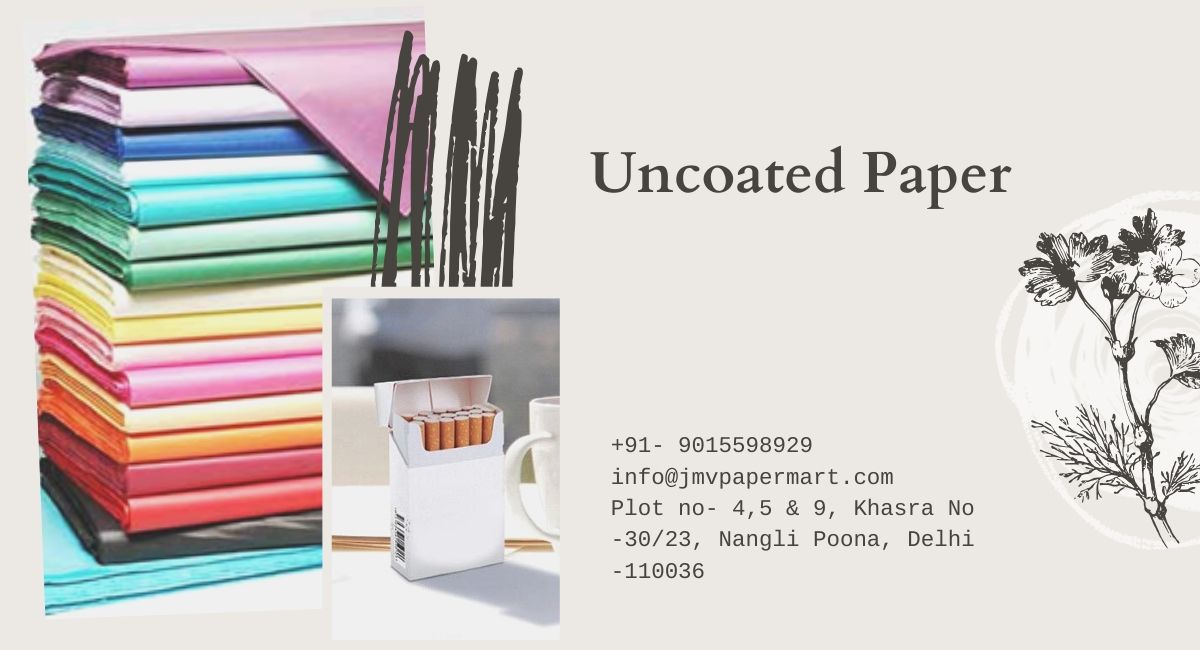Here are a few factors that organizations should think about when arranging any printing undertaking. It is not pretty much whether to use advanced printing or counterbalance printing, the paper type you pick is a significant thought. In our last post, we talked about the various kinds of covered paper alongside the advantages and uses for everyone. As we referenced in that post, it is critical to comprehend the alternatives accessible so as to verify that your printed item meets all desires from style to work. Here, we'll clarify precisely what uncoated paper is, its characteristics, just as its uses and advantages.
Physical Qualities of Uncoated paper
So as to see precisely how uncoated paper can function for your next task, it is imperative to initially discuss exactly how permeable it is. Since there is no dirt covering, the surface is more permeable than covered paper and uncoated paper can in this manner hold more ink. That doesn't really mean you will have greater thickness. What's more, the uncoated paper feels increasingly normal to the touch since its wood strands are more uncovered than those of covered paper. Ensure that your shading proofs reenact how the print will look on uncoated paper.
What's the Difference Between Coated and Uncoated Paper?
Choosing the best print item is extreme in case you're curious about paper stocks. One of our most regular client questions is: would it be a good idea for me to utilize covered or Uncoated Paper for my print structure? Would it be a good idea for me to choose Glossy or Matte business cards?
Advantages
What is the capacity of your printed item? Is an uncoated paper REQUIRED to make a piece more easy to use? Uncoated paper comes up short on a glossy completion that many covered papers have. The uncoated surface makes a lot of content simpler to peruse. It is additionally simpler to compose on uncoated paper on account of its sponginess. What're more, inscriptions (like decorated shapes or foil stepped plans) work better on uncoated paper. Uncoated paper can fill in as both a monetarily and stylishly engaging decision for your undertaking.
Where it is used best?
Uncoated paper is perfect for those occasions when you're looking for a completed item with an increasingly exquisite look. Since the paper feels increasingly regular and is simpler to peruse content from, it's optimal for letterheads, stationery, school booklets, menus, and leaflets. Pick this alternative on the off chance that you have to compose on your completed print piece. Likewise, uncoated paper is an incredible decision for eco-accommodating organizations since it offers increasingly common and “hearty” look and feels.
In general, the uncoated paper offers an increasingly conventional, characteristic search for printed pieces imprinted on either a computerized or balance press. It is more permeable than covered paper and makes perusing and composing simpler. These are terrifically significant components to think about when picking the correct paper. Get in touch with us and our group will work with you to locate the best choice and guarantee that the entirety of your printing needs is surpassed.
Covered and uncoated stocks frequently look very comparative, yet the thing that matters is the means by which the ink lies on the paper. Covered stocks incorporate an additional layer made during assembling that makes the paper less permeable.
Since uncoated stock permits more ink to be retained, it's not as smooth as covered paper. Uncoated stock is utilized for printing envelopes and business letterhead for a rich and tasteful look.
Models incorporate land handouts, business stationery, eatery menus, school bookmarks, and school booklets.
Remember that hues appear to be altogether unique on uncoated versus covered paper. They may seem darker than on covered stock, and pictures are not as sharp. A general guideline to recall is the thicker the paper, the more ink gets assimilated, and the fuzzier pictures will show up.
When making printed materials with embellishments like foil stepping, the uncoated stock gives higher complexity and makes the foil stand apart much more. Since ink doesn't sit over the paper, an uncoated stock is perfect for printing structures and materials to compose on.


